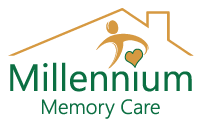 In the realm of medical mysteries, few conditions evoke as much intrigue and concern as Alzheimer’s disease. This debilitating neurodegenerative disorder, characterized by progressive memory loss and cognitive decline, poses a significant challenge to both patients and researchers alike. Yet, understanding Alzheimer’s didn’t happen overnight; it emerged through a series of pivotal discoveries over more than a century.
In the realm of medical mysteries, few conditions evoke as much intrigue and concern as Alzheimer’s disease. This debilitating neurodegenerative disorder, characterized by progressive memory loss and cognitive decline, poses a significant challenge to both patients and researchers alike. Yet, understanding Alzheimer’s didn’t happen overnight; it emerged through a series of pivotal discoveries over more than a century.
The story begins in 1906, when German psychiatrist Alois Alzheimer made a groundbreaking observation. While examining the brain tissue of a deceased patient who had exhibited symptoms of severe memory loss and confusion, Alzheimer noticed abnormal clumps and tangled fibers. These anomalies, later termed amyloid plaques and neurofibrillary tangles, became hallmark features of the disease that bears his name.
Alzheimer’s initial discovery laid the foundation for further investigations into the condition. However, progress was slow, and it wasn’t until the latter half of the 20th century that significant strides were made in unraveling its complexities.
In the 1970s and 1980s, advancements in technology, particularly neuroimaging techniques and biochemical assays, allowed researchers to delve deeper into the pathology of Alzheimer’s. They identified the role of beta-amyloid protein in the formation of plaques and the hyperphosphorylation of tau protein leading to neurofibrillary tangles, providing valuable insights into the disease mechanisms.
The 1990s marked a pivotal moment with the identification of genetic mutations associated with familial Alzheimer’s disease. Researchers pinpointed mutations in genes such as APP (Amyloid Precursor Protein), PSEN1 (Presenilin 1), and PSEN2 (Presenilin 2), shedding light on the hereditary component of the disease and opening new avenues for genetic research and therapeutic interventions.
As the 21st century dawned, the quest for effective treatments intensified. While numerous clinical trials aimed at targeting beta-amyloid accumulation and tau pathology have been conducted, success has remained elusive. However, these endeavors have deepened our understanding of Alzheimer’s and highlighted the need for early detection and intervention strategies.
One of the most significant challenges in Alzheimer’s research is its heterogeneity. The disease manifests differently in individuals, making diagnosis and treatment incredibly complex. Moreover, the interplay of genetic, environmental, and lifestyle factors further complicates the picture.
Recent years have seen a shift towards a more holistic approach to Alzheimer’s research, encompassing not only the pathological hallmarks but also considering the brain’s immune response, vascular health, and neuronal network dysfunction. This multifaceted approach aims to uncover novel therapeutic targets and develop personalized treatment regimens tailored to the individual’s unique disease profile.
In the realm of diagnostics, advancements in biomarker discovery, including cerebrospinal fluid markers and neuroimaging techniques, hold promise for early detection and monitoring of disease progression. Early intervention, before irreversible neuronal damage occurs, is believed to be crucial in altering the trajectory of Alzheimer’s.
Beyond biomedical research, there’s a growing recognition of the importance of interdisciplinary collaboration and patient-centered care in tackling Alzheimer’s disease. From neuroscience and genetics to psychology and social work, diverse fields are converging to address the multifaceted challenges posed by this complex condition.
While the journey to unravel the mysteries of Alzheimer’s disease has been long and arduous, each discovery brings us closer to understanding this enigmatic disorder. As researchers continue to push the boundaries of knowledge and innovation, there is hope that one day, we will conquer Alzheimer’s and alleviate the burden it imposes on millions worldwide.
